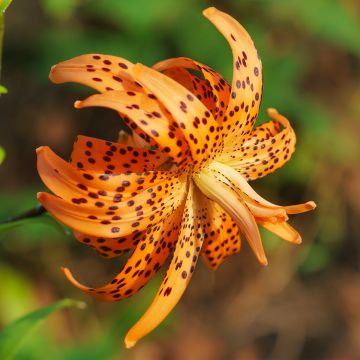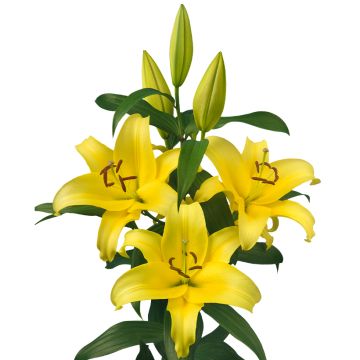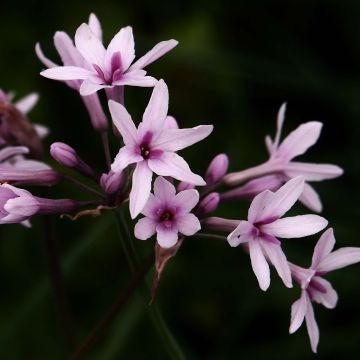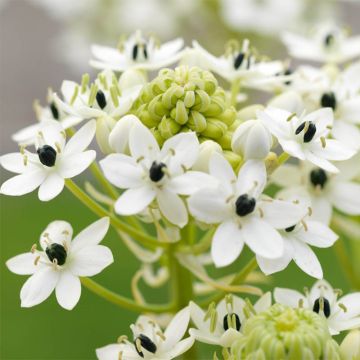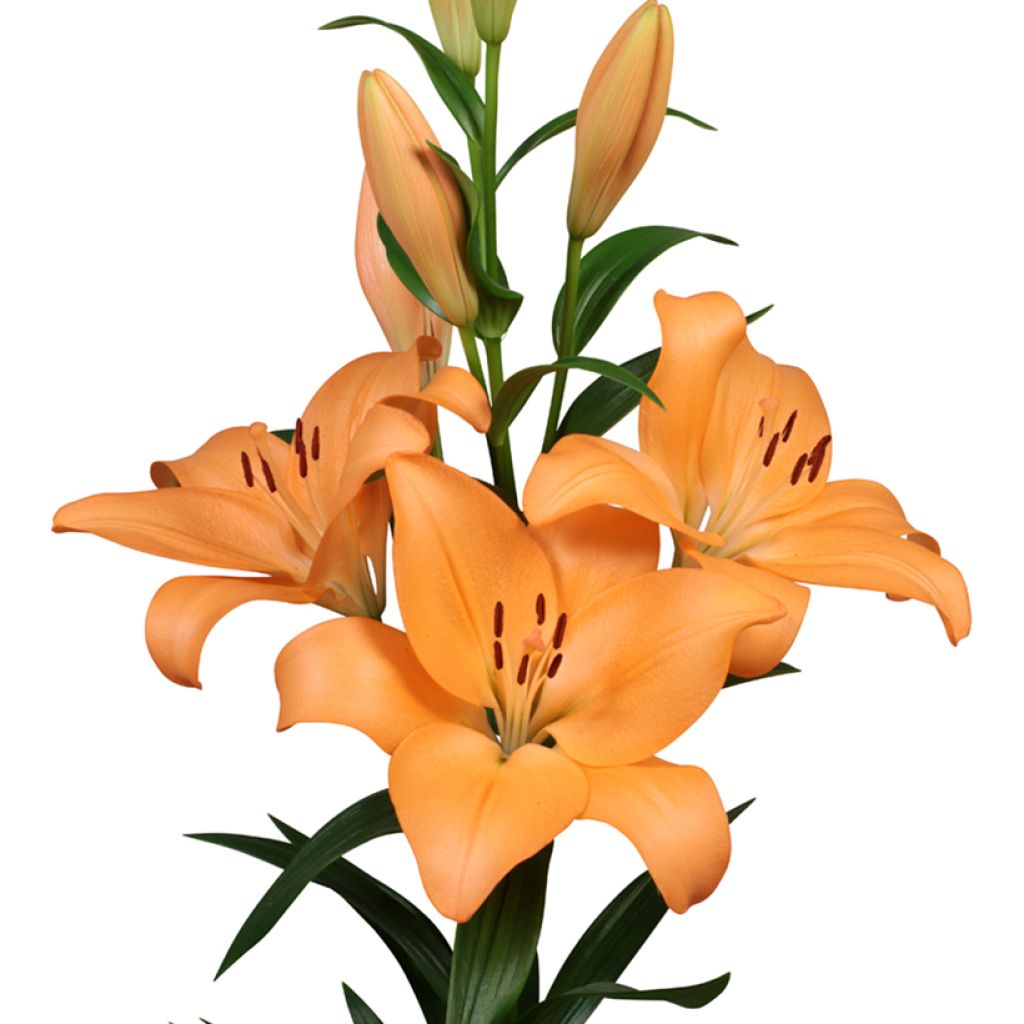

Lilium (x) longiflorum Menton - Easter Lily
Lilium (x) longiflorum Menton - Easter Lily
Lilium (x) longiflorum Menton
Easter Lily, Trumpet Lily
This item cannot be shipped to the selected country
Delivery charge from €5.90
More information
Schedule delivery date,
and select date in basket
This plant carries a 6 months recovery warranty
More information
We guarantee the quality of our plants for a full growing cycle, and will replace at our expense any plant that fails to recover under normal climatic and planting conditions.
From €5.90 for pickup delivery and €6.90 for home delivery
Express home delivery from €8.90.
Does this plant fit my garden?
Set up your Plantfit profile →
Description
The 'Menton' hybrid lily is an elegant cross between Lilium longiflorum and Asian Lilium, offering large flowers in pastel shades and great adaptability to the garden. With its broad petals of soft orange infused with pink, it stands out for its refined style and generous flowering. Whether in flower beds or bouquets, this lily is perfect for adding a touch of softness and colour.
A member of the Liliaceae family, the Lilium 'Menton' (LA) was developed in 2018 by the Dutch breeder Vletter en den Haan Beheer BV. This cultivar is distinguished by its strong, light green stems touched with purple, proudly supporting its four large upward-facing cup-shaped flowers. Each flower, measuring up to 29 cm wide, presents a range of soft hues: the interior combines a pinkish orange with a greenish yellow throat, while the exterior features slightly orangish edges on a salmon pink base. The stamens are crowned with dark brown pollen, and the flowers emit a light fragrance. The foliage is green, with slender leaves 21.5 cm long and 3 cm wide, arranged alternately on the stem. This lily reaches a height of 1.05 to 1.60 m depending on bulb size and growing conditions. It blooms profusely in July-August. Vegetation dries up in autumn, while the bulb goes into dormancy. The bulbs are reserve organs with fleshy overlapping scales.
LA hybrid lilies, such as 'Menton', generally bloom after 12 or 13 weeks of cultivation, they can be "forced" by planting them early in the season in a veranda or warm room. They are highly cultivated for cut flowers. The soil they are planted in should remain moist throughout the growth and flowering period. Winter protection, in the form of a thick mulch, is not unnecessary in very cold regions
The 'Menton' Lily is an excellent variety for sunny flower beds where its soft colour easily complements perennials and other summer bulbs. It pairs particularly well with Agapanthus africanus ‘Albus’ for a contrast of shape and colour, Echinacea ‘Cheyenne Spirit’ whose orange and pink tones resonate with those of the lily, as well as the Dwarf Dahlia ‘Gallery Art Fair’ with white flowers. The White Gaura lindheimeri 'Snowstorm' completes this combination by providing a soft and light effect around the large flowers of the Lilium Menton. The lilies appreciate having their feet in the shade, neighbouring plants will help prevent the stems from tipping over in the wind.
Report an error about the product description
Plant habit
Flowering
Foliage
Botanical data
Lilium
(x) longiflorum
Menton
Liliacées
Easter Lily, Trumpet Lily
Cultivar or hybrid
Other Lilies A to Z
Planting and care
The Lilium 'Menton' prefers soils that are moist and rich in humus; it does not appreciate very dry, poor, or poorly drained and highly clayey soils. It is a variety that can withstand brief frosts of around -20°C. Plant it in a sunny spot in spring or early autumn, burying the bulbs 15 cm deep (about two to three times the size of the bulb) in a pocket of soil mixed with leaf compost. Surround them with a pocket of sand to prevent rot and slug attacks, while allowing them to grow more easily. Mark the planting location, as growth only begins in April.
Growing in a deep pot allows the plant to overwinter in an unheated, cool, but frost-free room. This method also allows for "forcing" the bulb, meaning advancing the start of growth and flowering. To do this, the pot should be placed in a very bright and slightly heated room before the beginning of spring.
When the stems reach 30 cm in height, discreetly stake them. If red insects appear, treat them immediately; they are lily beetles whose larvae can devour all the leaves. The most effective method is to catch them by hand; be careful, they drop as soon as they are touched, so place a box underneath. After flowering, it is useful to cut off the faded flowers halfway to keep the bed beautiful throughout the summer.
Planting period
Intended location
Care
This item has not been reviewed yet - be the first to leave a review about it.
Fragrant flowering bulbs
Haven't found what you were looking for?
Hardiness is the lowest winter temperature a plant can endure without suffering serious damage or even dying. However, hardiness is affected by location (a sheltered area, such as a patio), protection (winter cover) and soil type (hardiness is improved by well-drained soil).

Photo Sharing Terms & Conditions
In order to encourage gardeners to interact and share their experiences, Promesse de fleurs offers various media enabling content to be uploaded onto its Site - in particular via the ‘Photo sharing’ module.
The User agrees to refrain from:
- Posting any content that is illegal, prejudicial, insulting, racist, inciteful to hatred, revisionist, contrary to public decency, that infringes on privacy or on the privacy rights of third parties, in particular the publicity rights of persons and goods, intellectual property rights, or the right to privacy.
- Submitting content on behalf of a third party;
- Impersonate the identity of a third party and/or publish any personal information about a third party;
In general, the User undertakes to refrain from any unethical behaviour.
All Content (in particular text, comments, files, images, photos, videos, creative works, etc.), which may be subject to property or intellectual property rights, image or other private rights, shall remain the property of the User, subject to the limited rights granted by the terms of the licence granted by Promesse de fleurs as stated below. Users are at liberty to publish or not to publish such Content on the Site, notably via the ‘Photo Sharing’ facility, and accept that this Content shall be made public and freely accessible, notably on the Internet.
Users further acknowledge, undertake to have ,and guarantee that they hold all necessary rights and permissions to publish such material on the Site, in particular with regard to the legislation in force pertaining to any privacy, property, intellectual property, image, or contractual rights, or rights of any other nature. By publishing such Content on the Site, Users acknowledge accepting full liability as publishers of the Content within the meaning of the law, and grant Promesse de fleurs, free of charge, an inclusive, worldwide licence for the said Content for the entire duration of its publication, including all reproduction, representation, up/downloading, displaying, performing, transmission, and storage rights.
Users also grant permission for their name to be linked to the Content and accept that this link may not always be made available.
By engaging in posting material, Users consent to their Content becoming automatically accessible on the Internet, in particular on other sites and/or blogs and/or web pages of the Promesse de fleurs site, including in particular social pages and the Promesse de fleurs catalogue.
Users may secure the removal of entrusted content free of charge by issuing a simple request via our contact form.
The flowering period indicated on our website applies to countries and regions located in USDA zone 8 (France, the United Kingdom, Ireland, the Netherlands, etc.)
It will vary according to where you live:
- In zones 9 to 10 (Italy, Spain, Greece, etc.), flowering will occur about 2 to 4 weeks earlier.
- In zones 6 to 7 (Germany, Poland, Slovenia, and lower mountainous regions), flowering will be delayed by 2 to 3 weeks.
- In zone 5 (Central Europe, Scandinavia), blooming will be delayed by 3 to 5 weeks.
In temperate climates, pruning of spring-flowering shrubs (forsythia, spireas, etc.) should be done just after flowering.
Pruning of summer-flowering shrubs (Indian Lilac, Perovskia, etc.) can be done in winter or spring.
In cold regions as well as with frost-sensitive plants, avoid pruning too early when severe frosts may still occur.
The planting period indicated on our website applies to countries and regions located in USDA zone 8 (France, United Kingdom, Ireland, Netherlands).
It will vary according to where you live:
- In Mediterranean zones (Marseille, Madrid, Milan, etc.), autumn and winter are the best planting periods.
- In continental zones (Strasbourg, Munich, Vienna, etc.), delay planting by 2 to 3 weeks in spring and bring it forward by 2 to 4 weeks in autumn.
- In mountainous regions (the Alps, Pyrenees, Carpathians, etc.), it is best to plant in late spring (May-June) or late summer (August-September).
The harvesting period indicated on our website applies to countries and regions in USDA zone 8 (France, England, Ireland, the Netherlands).
In colder areas (Scandinavia, Poland, Austria...) fruit and vegetable harvests are likely to be delayed by 3-4 weeks.
In warmer areas (Italy, Spain, Greece, etc.), harvesting will probably take place earlier, depending on weather conditions.
The sowing periods indicated on our website apply to countries and regions within USDA Zone 8 (France, UK, Ireland, Netherlands).
In colder areas (Scandinavia, Poland, Austria...), delay any outdoor sowing by 3-4 weeks, or sow under glass.
In warmer climes (Italy, Spain, Greece, etc.), bring outdoor sowing forward by a few weeks.

































